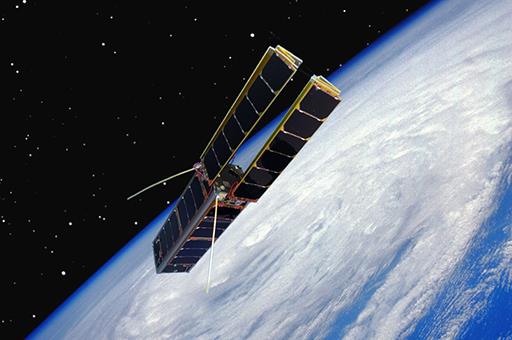Ministry of Public Works takes part in first validation test on future remote beacon activation service of Galileo navigation satellite system
News - 2019.9.20
The aim of this new service is to allow the activation, through the Galileo signal and from an earth-based centre, of a beacon housed in aircraft that provide its position, and it is conceived for its use in emergency situations (if all trace of the aircraft or vessel or contact with the crew is lost, etc.). Its added value lies in emergency situations in which a conventional distress beacon - generally activated manually and on some occasions automatically - is not activated (voluntary disconnection of transponder, etc.).
This is not only a very interesting project from the point of view of air transport, but is also applicable to the maritime sphere, and hence analogue testing is also due to be carried out with maritime vessels.
The remote activation and subsequent deactivation testing of the radio-beacon was successfully performed in a quasi-real environment, involving all the competent parties of the General Secretariat for Transport and Enaire, on behalf of the Ministry of Public Works, of the Army Rescue Coordination Centre and of the Cospas-Sarsat Mission Control Centre of INTA, on behalf of the Ministry of Defence, of Iberia as the airline that simulated the crisis situation, of the European GNSS Agency, of the operator of the Spaceopal GNSS Services Centre (in which Ineco and Telespazio Ibérica are participants) located in Torrejón, of the French Space Agency and of the beacon manufacturer Orolia.
In this simulation, the flight surveillance department of Iberia, known as Flightwatch recorded a loss of communication with an aircraft that was flying over the Atlantic Ocean outside of radar coverage. The crew did not respond to the demands for contact from the airline, nor conducted periodic reporting. For its part, the Enaire Air Control Centre was unable to locate the position of the aircraft. After a prudential period of time in which Iberia was in continuous contact with Enaire and the Army Rescue Coordination Centre, the airline decided to make use of the remote beacon activation service of the European GNSS Agency. Within a period of one minute, the airline and the Rescue Coordination Centre gained access to the ongoing monitoring of the position of the aircraft.
Better interfaces
Subsequently, it was simulated that Iberia gained contact with the crew and normality was re-established and hence the beacon was disconnected remotely in a coordinated fashion between the parties.
This test has served to pre-design a possible function throughout the operational chain with this new service, improve the interfaces of the European GNSS Agency and validate the operational concept.
Each party involved in the operational chain valued this new functionality provided exclusively by Galileo as very positive and extraordinarily useful. In turn, they made suggestions to optimise the processes and modify interfaces that allow intervention times to be reduced.
This new service being developed comes on top of many others that Galileo already offers in relation to transport and mobility, such as the Search and Rescue (SaR) Service, with a return channel that will be tremendously important to improve the services provided by the rescue authorities of all countries in the world.
Non official translation





